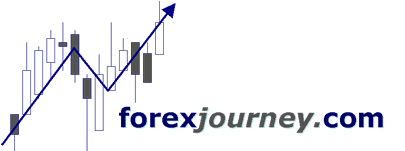How Does a Trader Who Runs from Risk Achieve THIS Track Record?
Peter Brandt is the "Real McCoy"
August 28, 2012
By Elliott Wave International
In the late '70s, Peter Brandt emptied his trading accounts several times. He'd lose a string of trades, then refund his account, then "wipe out" all over again.But he persisted because he knew he was meant for a trading career. His determination paid off.In 1982, a currency chart "sang a song" for Brandt. By that time he had saved his earnings and supplied his trading account with a healthy sum.
The currency trade worked out very well. After that trade, he believed he could call himself a competent full-time trader.
Eventually, Peter Brandt's trading earned an annual 42% return over an 18-year period.
Did he achieve this by "swinging for the fences" on every trade? No. In fact, he believes that successful speculation requires strict risk-management.
One other message became clear when I recently called and spoke with Brandt: successful speculation is also about managing yourself.
Here's an excerpt from our Q&A:
The biggest barrier to profitable trading is not the markets themselves. It's not other traders. It's not high frequency trading operations. It's not the Wall Street trading machine out to get us. The biggest hurdle is ourselves. We have met the enemy, and the enemy is ourselves.
The human element comes into play immediately when an individual thinks he or she can make their living from trading. The human components that drive this mentality include pride, unrealistic expectations, wishful thinking, greed, disconnected hope.
If an aspiring trader can learn from and survive the mistakes of the first three to five years, they will finally figure out the real rules of the game...Most aspiring traders with four or five years of experience who know what they must do will readily agree that their real problem is actually doing what they must do. It is said that successful trading is an uphill run or upstream swim against human nature. How true!Q. Risk management is very important to you as a trader, why? How do professional traders view risk differently from beginners?
I see this in two manifestations. First, professional traders expect to have losses -- most lose more often than they win. They build losses into their processes and expectations. They factor losses into the equation.
Second, while the default expectation for professional traders is a losing trade, the default expectation of a beginner is for a winner. As a result, professional traders build aggressive risk management protocols into their trading operations.
One of the best traders I have ever known was a man named Dan Markey, who mentored me at the Chicago Board of Trade. He once told me that his job as a trader was as simple as liquidating every trade that closed at a loss. He focused on his losers. He ignored his winners.Q: What steps did you take that led you to your successful track record of 42% over 18 years?
This is not easy to answer, mainly because I don't want to give myself credit for any success I have achieved.
First, I didn't need to make money from trading when I broke into futures. So that pressure was absent. I had income from several very large accounts. My proprietary trading started four years into my career in the markets.
Second, I had two very wise mentors. These were guys who told me about all the landmines I would encounter. They directed me to less risky paths. They were also very excellent traders and I could observe their habits.
Third, I stumbled across classical charting principles. Every successful trader has an approach that fits their personality, level of capitalization and risk tolerance. Some beginners never find a niche. I found a niche early on.
Fourth, I didn't have my ego tied to every trade. I was able to take losses in stride.
Finally, I got lucky on a big score within the first two years of my proprietary trading. Now, people can say that luck is a process of a lot of things that come before it. But, luck is luck. I had a hunch and I bet a bunch -- and I was right. I might have been wrong and the outcomes could have been very different.
I should also say that I'm a sequential thinker. For me that works because I go through the mental process of accounting for all the contingencies I can think of. If this happens, I've planned my response. If that happens, I've got my other response planned.
 |
Learn more about Brandt -- a
veteran trader and one of a select few contributors to Bob Prechter's
Elliott Wave Theorist -- in this exclusive FREE report: Foundations of Successful Trading: Insights on Becoming a Consistently Successful Trader from Peter Brandt. Whether you are an average investor, a novice trader, or an industry professional, you stand to benefit from what Peter Brandt has to say. You can learn more about Brandt and gain insights on his consistently successful approach to market speculation in this free 16-page excerpt from Part I of his book, "Foundations of Successful Trading." Download your free report and learn what leads to a lifetime of trading success >> |






